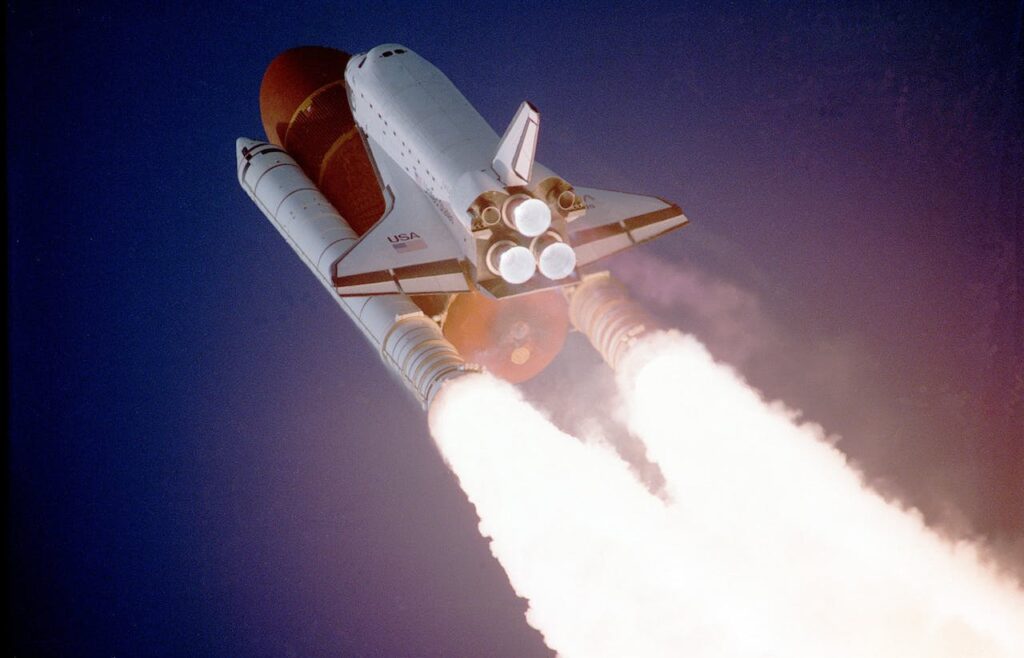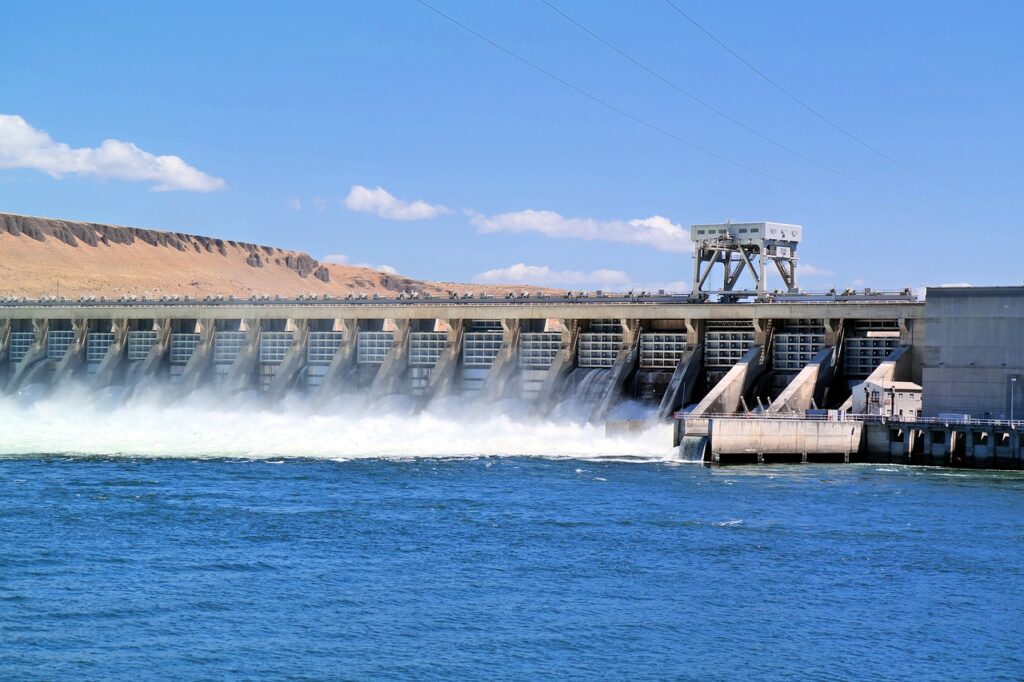The Hidden Power of Movement: Why Kinetic Energy is the Energy You Need to Know About
In our quest to understand the fundamental forces that shape our universe, we often come across the concept that kinetic energy is the energy of motion. This energy, present in everything from the gentle swaying of a tree branch to the roaring engines of a spacecraft, is a cornerstone of our physical world. Kinetic energy, as a form of mechanical energy, intertwines intricately with the fabric of our daily lives and the vast mechanisms of the cosmos.
Kinetic Energy: The Energy of Movement
Understanding the Basic Principle
Kinetic energy, fundamentally, is the energy an object possesses due to its motion. Whether it’s a rolling ball, a flying bird, or even the Earth revolving around the Sun, kinetic energy is at play. It’s a dynamic energy, constantly in flux as objects move and interact with their surroundings.
The Kinetic Energy Equation
Central to understanding kinetic energy is the kinetic energy equation. This equation reveals that the kinetic energy of an object is directly proportional to the square of its velocity and its mass. In simple terms, faster-moving and heavier objects carry more kinetic energy.
The Role of Mass and Velocity
- Mass of the Object: The greater the mass, the more kinetic energy it can store.
- Square of Its Velocity: Even a small increase in speed significantly boosts kinetic energy.
Kin Energy: A Closer Look at Motion Energy
Exploring the Types of Kinetic Energy
- Translational Kinetic Energy: This is what most people think of – it’s the energy due to the movement of an object from one place to another.
- Rotational Kinetic Energy: Found in objects that are spinning, like a top or a planet. Angular velocity plays a key role here.
- Vibrational Kinetic Energy: This is the energy due to the vibration of an object, like the movement of atoms within materials.
Kinetic Energy in Daily Life

Examples of Kinetic Energy Around Us
- A Car’s Engine: When you burn gasoline, the engine converts it into kinetic energy, propelling the car forward.
- Sports: A thrown baseball or a kicked soccer ball is full of kinetic energy.
- Technology: Devices from smartphones to satellites rely on kinetic energy in various forms.
The Link Between Potential Energy and Kinetic Energy
Potential energy, or the energy of position, is another vital component of our physical world. It’s like the opposite side of the same coin. When potential energy, such as a car perched on a steep hill, converts into kinetic energy, it exemplifies the transformation of energy from one form to another.
From Microscopic to Cosmic: The Spectrum of Kinetic Energy
The Diverse Forms of Kinetic Energy
- At the Subatomic Level: Electrons orbiting the nucleus of an atom possess kinetic energy.
- In Nature: The motion of waves, the flow of rivers, and the movement of wind are all driven by kinetic energy.
- In Outer Space: Celestial bodies, from planets to galaxies, are in constant motion, holding immense amounts of kinetic energy.
This initial section of the article lays the foundation for exploring kinetic energy’s various aspects. From its fundamental principles to its manifestations in daily life and the natural world. The next sections will delve deeper into specific examples, the kinetic energy equation, and its relationship with other forms of energy, aligning with the keywords provided.
The Fascinating World of Mechanical Energy
Kinetic Energy as a Form of Mechanical Energy
Kinetic energy, being a type of mechanical energy, is essential in the study of physics and engineering. It is particularly important in understanding how different forms of energy can convert into each other. Mechanical energy, as a whole, includes both kinetic and potential energy, offering a comprehensive view of the energy in a system.
Kinetic Energy in Everyday Objects
Observing Kinetic Energy in Motion
- Rubber Bands: When stretched, a rubber band stores potential energy, which is rapidly converted to kinetic energy when released.
- A Car Crash: A dramatic example of motion energy, where the kinetic energy of a moving car is suddenly transformed into other forms of energy upon impact.
The Energy of Motion: Understanding Kinetic Energy in Depth

Kinetic Energy and Its Connection to Velocity
The term “square of its velocity” in the kinetic energy equation highlights a crucial aspect: how even small increases in velocity can lead to large increases in kinetic energy. This principle is vividly illustrated in scenarios ranging from sports to transportation.
The Impact of Speed
- Sports: The speed of a thrown ball drastically affects its kinetic energy.
- Transportation: High-speed vehicles, like trains or planes, possess enormous kinetic energy due to their velocity.
Kinetic Energy in Natural Phenomena
How Kinetic Energy Shapes Our Environment
- Waterfalls and Rivers: The movement of water is a clear display of kinetic energy, from the gentle flow of a stream to the powerful rush of a waterfall.
- Wind: The motion of air molecules, driven by temperature and pressure differences, is another natural manifestation of kinetic energy.
The Role of Kinetic Energy in Renewable Energy Sources
Harnessing Kinetic Energy for Sustainable Power
- Hydroelectric Turbines: These turbines convert the kinetic energy of flowing water into electricity, showcasing the practical applications of kinetic energy.
- Wind Turbines: Similarly, wind turbines transform the kinetic energy of wind into usable electrical energy.
Kinetic Energy Across the Spectrum of Light and Electromagnetic Waves
The Invisible yet Powerful World of Electromagnetic Energy
- Visible Light: A type of radiant energy, visible light consists of photons in motion, each carrying kinetic energy.
- Radio Waves: These waves, used in communication, are another form of electromagnetic energy in motion.
Kinetic Energy in the Universe

Exploring the Cosmic Scale of Kinetic Energy
- Celestial Bodies: The planets and stars, with their massive size and velocity, contain colossal amounts of kinetic energy.
- Gamma Rays and Cosmic Phenomena: High-energy gamma rays, emitted by astronomical events, are a dramatic example of the energy of motion on a cosmic scale.
The Connection Between Kinetic Energy and Chemical Energy
From the Bonds of Atoms to the Fuel in Our Cars
- Natural Gas and Gasoline: These fuels store chemical energy, which, when burned, is converted into kinetic energy, powering engines and heating homes.
- Batteries: Store chemical energy that is transformed into kinetic energy when used in devices.
This section further explores the various manifestations and implications of kinetic energy, from everyday objects to natural phenomena and renewable energy sources. The next segment will delve into more specific examples, including the kinetic energy equation’s deeper implications and the interaction between kinetic energy and other forms of energy.
Kinetic Energy and the Wonders of Motion
Delving Deeper into the Science of Moving Objects
- Angular Velocity and Rotational Kinetic Energy: Objects in rotation, like a spinning top or a planet, showcase kinetic energy in a circular motion. Angular velocity determines how much kinetic energy is stored in these rotating systems.
- Motion of Waves: From the gentle ripples on a pond to the towering waves of the ocean, kinetic energy is ever-present in the motion of water, influenced by wind, gravity, and other forces.
Kinetic Energy in Advanced Technology

The Impact of Kinetic Energy on Modern Innovations
- Space Exploration: Rockets and satellites rely heavily on kinetic energy for their movement through space, overcoming Earth’s gravitational pull.
- Medical Technology: Advanced imaging techniques, like MRI machines, utilize principles of kinetic and electromagnetic energy to create detailed images of the human body.
Kinetic Energy in the Quantum Realm
The Intriguing World of Subatomic Scales
- Electrons and Nuclei: At the subatomic level, kinetic energy plays a crucial role. Electrons orbiting the nucleus of an atom possess significant kinetic energy, fundamental to chemical reactions and electrical energy.
- Nuclear Energy: The splitting or fusion of atomic nuclei in nuclear reactions releases vast amounts of energy, largely in the form of kinetic energy.
The Kinetic Energy Equation: A Deeper Dive
Breaking Down the Formula
The kinetic energy equation, KE = 1/2 mv² (where m is mass and v is velocity), is central to understanding how kinetic energy works. This equation shows that the kinetic energy of an object is not just a function of its mass, but more significantly, of the square of its speed. This relationship implies that even a slight increase in speed results in a considerable increase in kinetic energy.
Kinetic Energy and Environmental Impact

Understanding the Balance of Energy and Ecology
- Renewable Energy Sources: Harnessing kinetic energy through wind and hydroelectric power offers environmentally friendly alternatives to fossil fuels.
- Conservation Efforts: Understanding kinetic energy helps in designing more efficient machines and vehicles, reducing the ecological footprint.
Frequently Asked Questions About Kinetic Energy
What is an example of gravitational energy converting to kinetic energy?
A classic example is an object falling from a height, where its potential energy gradually converts to kinetic energy as it accelerates downwards.
How does kinetic energy relate to a car’s engine?
In a car’s engine, chemical energy from the fuel is converted into kinetic energy, powering the vehicle.
What is a dramatic example of motion energy?
Natural disasters like earthquakes and tsunamis are dramatic examples, where vast amounts of kinetic energy are suddenly released.
Can kinetic energy be a form of clean energy?
Yes, kinetic energy harnessed from wind, water, and solar sources is a form of clean, renewable energy.
Conclusion: The Vital Role of Kinetic Energy in Our Lives
In conclusion, kinetic energy, the energy of motion, is a fundamental and versatile component of our universe. From powering the cars we drive to influencing the natural phenomena we observe, kinetic energy is integral to both the immense and minute aspects of our world.
Understanding and harnessing this form of energy not only deepens our appreciation of the physical laws governing our environment but also opens pathways to sustainable and innovative solutions for the future.
The final section wraps up the exploration of kinetic energy, addressing its importance in advanced technology, its role in the quantum realm, and its environmental impact. Also it concludes by reaffirming the vital role kinetic energy plays in various aspects of our lives and the future of sustainable energy.
Recent Posts
Understanding Energy and Electricity: The Power For Progress
Energy and Electricity Energy and electricity are integral components of modern life, powering everything from homes and businesses to transportation and communication. Without them, the...
The Future of Wind Energy The future of wind energy is set to play a critical role in addressing global energy needs while combating climate change. As renewable energy sources like wind and...


